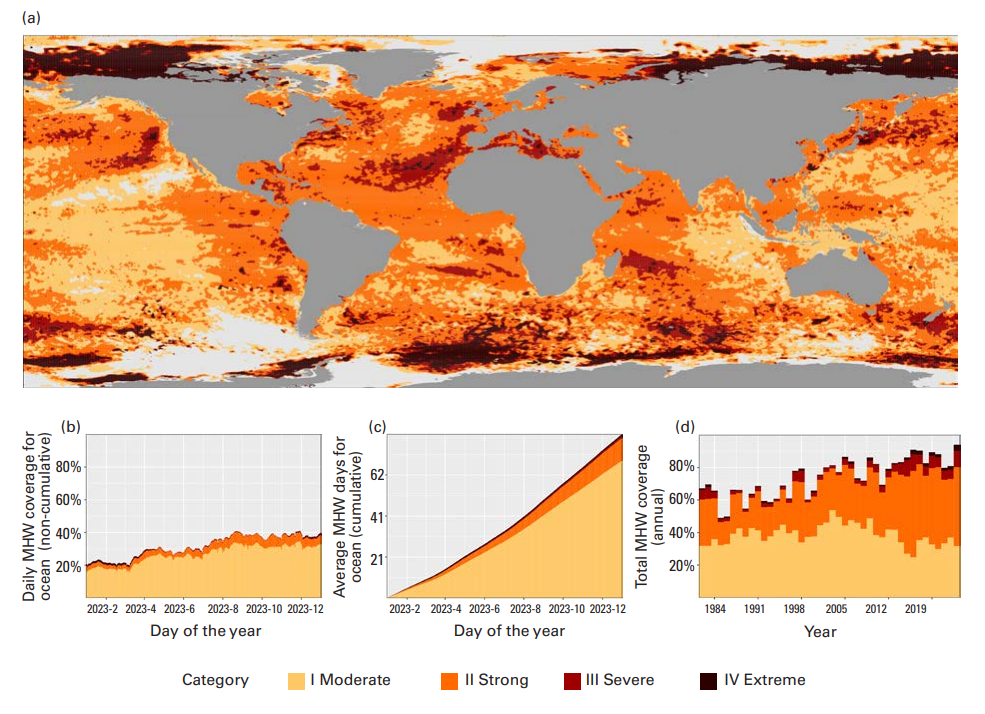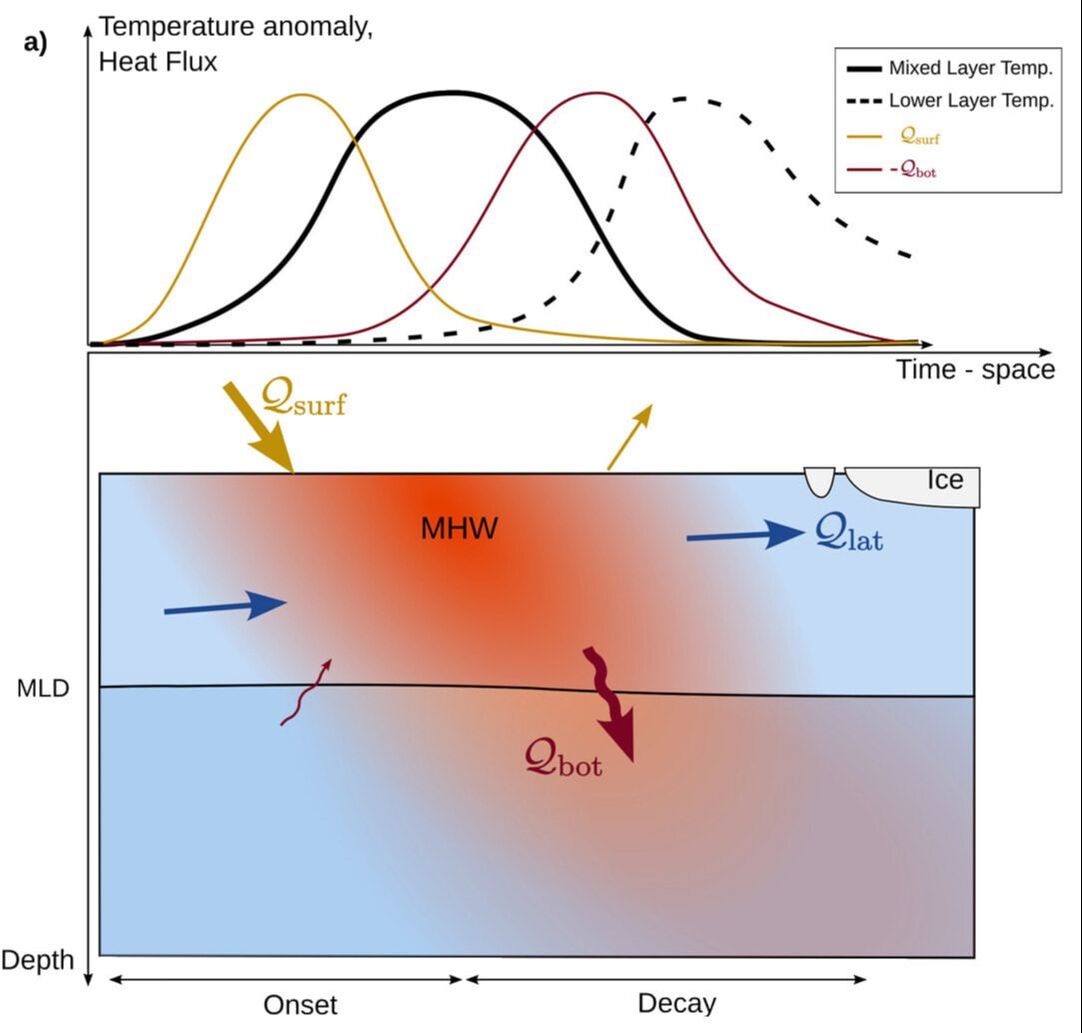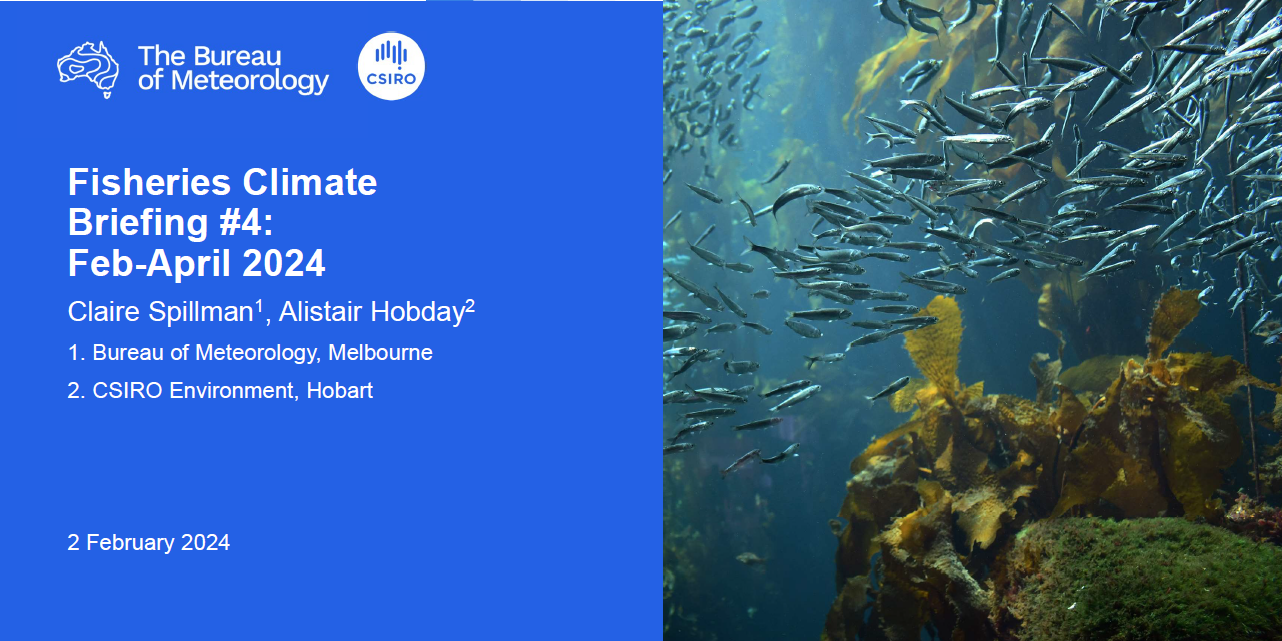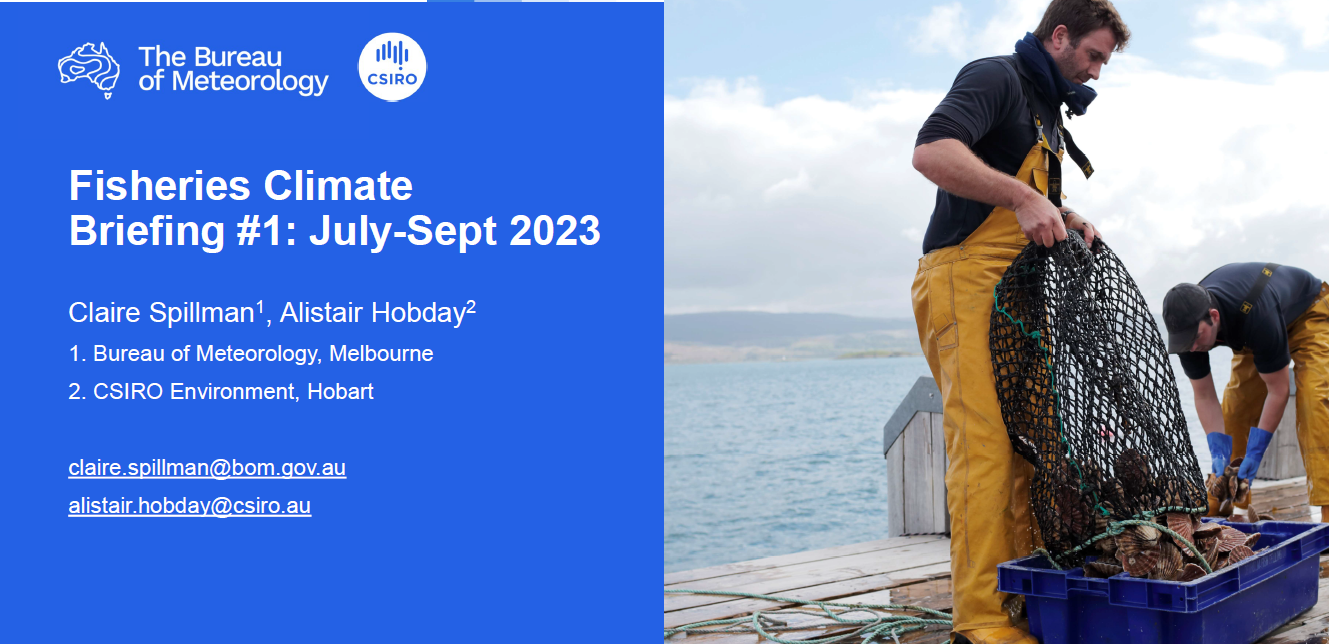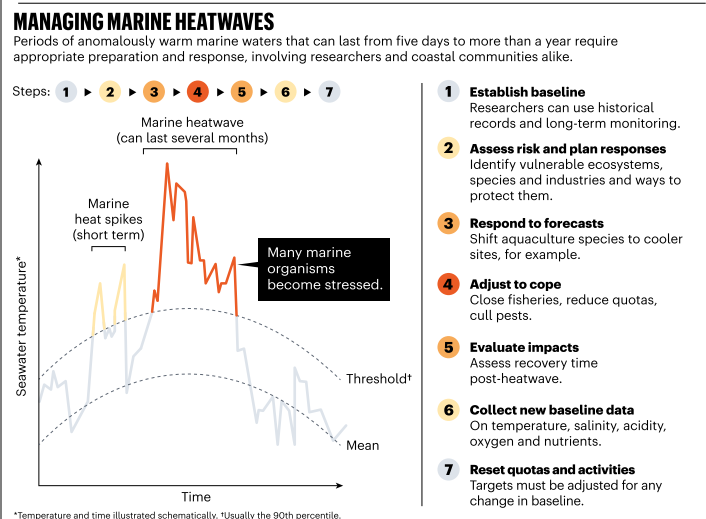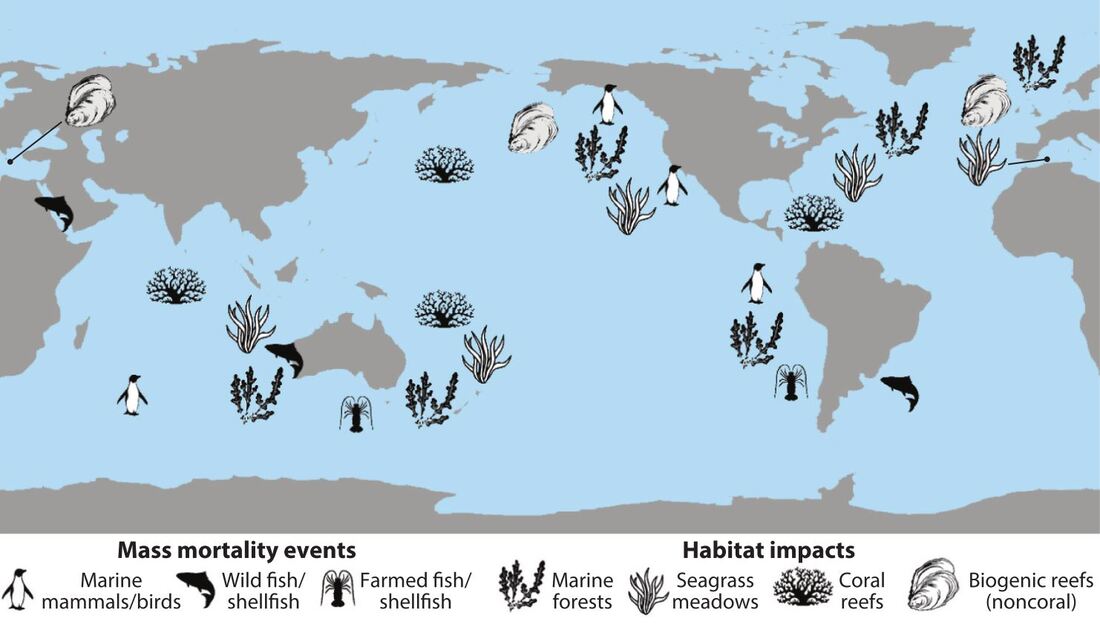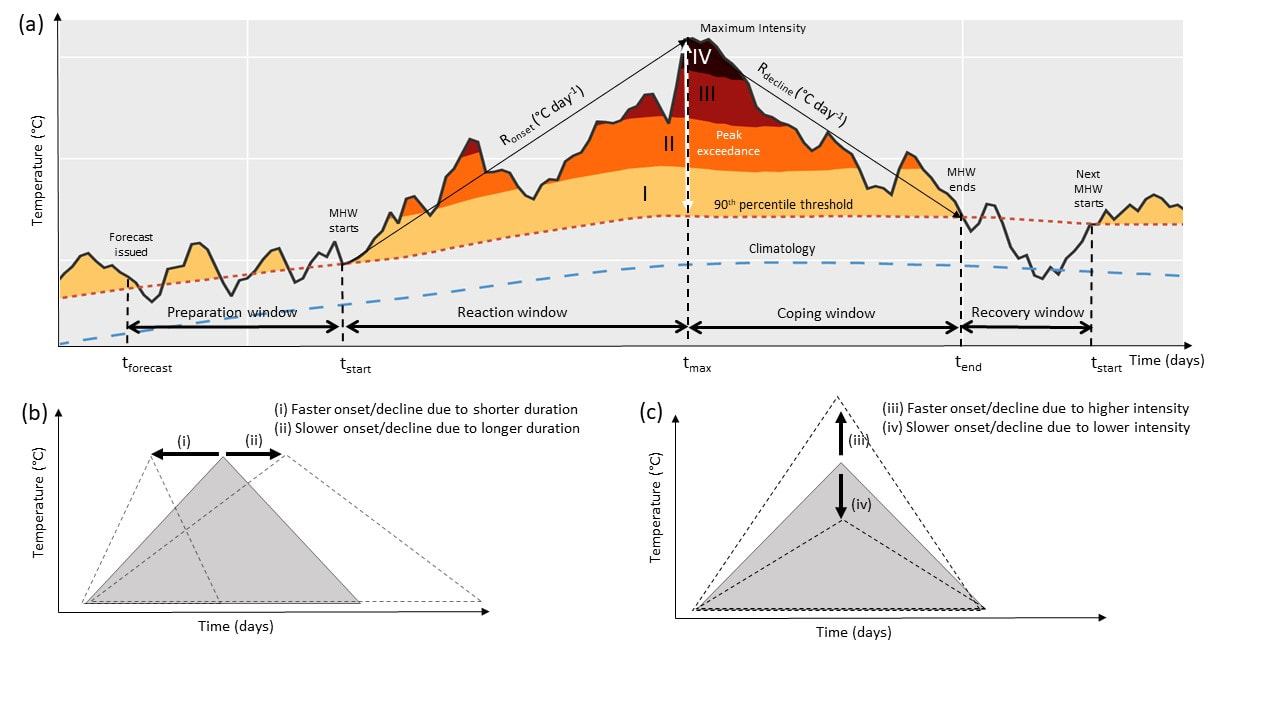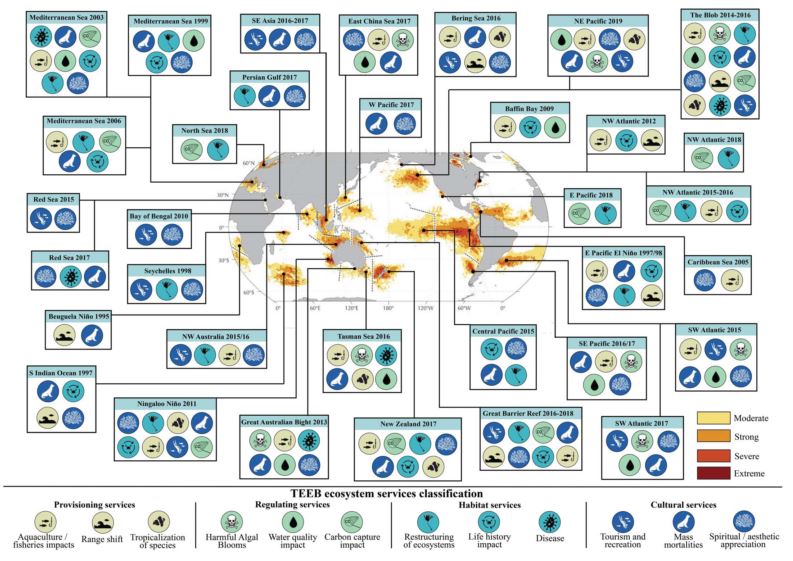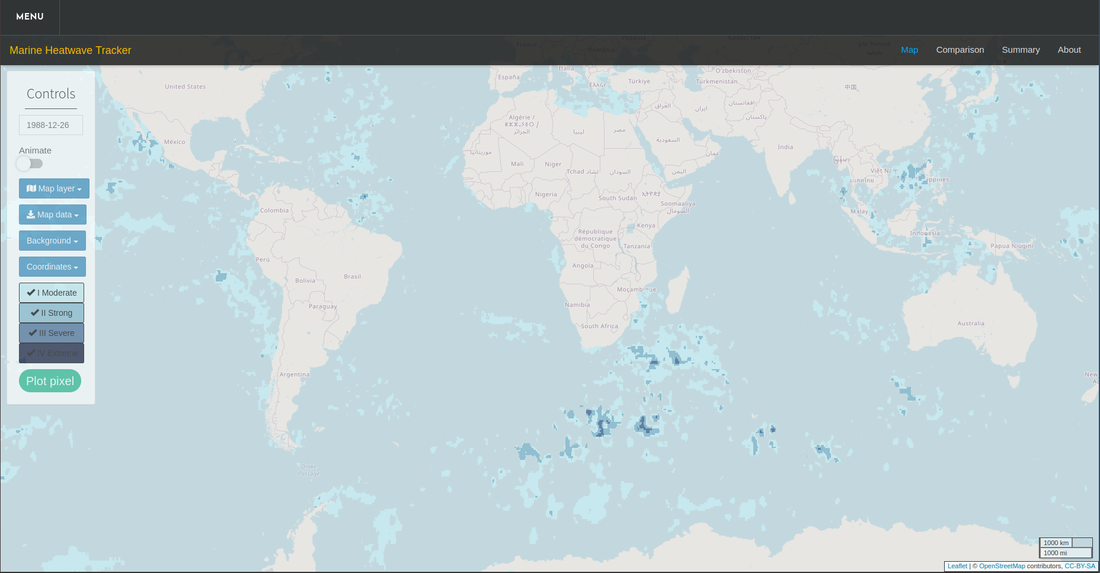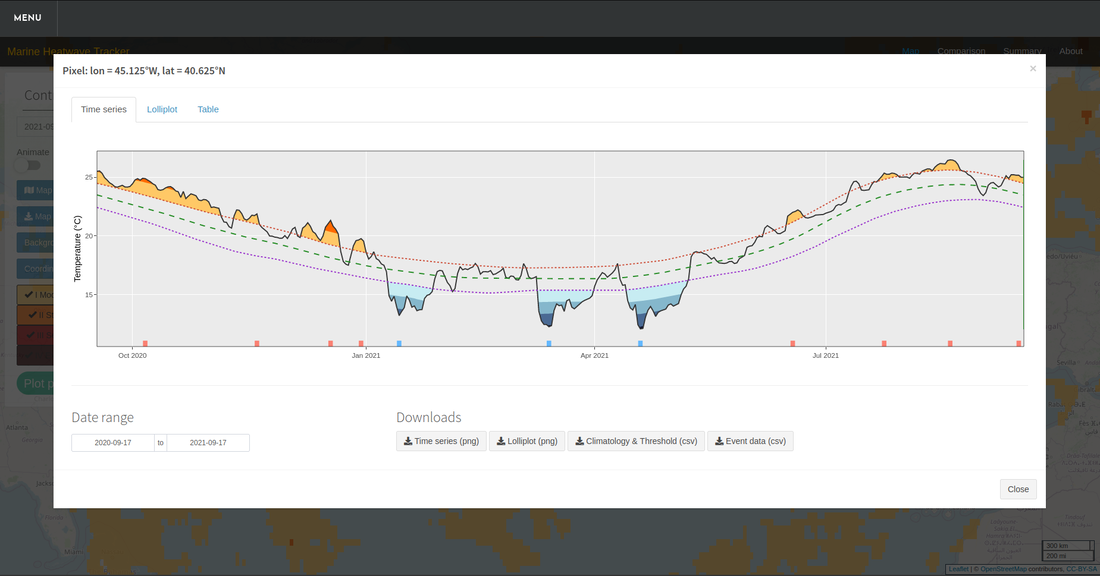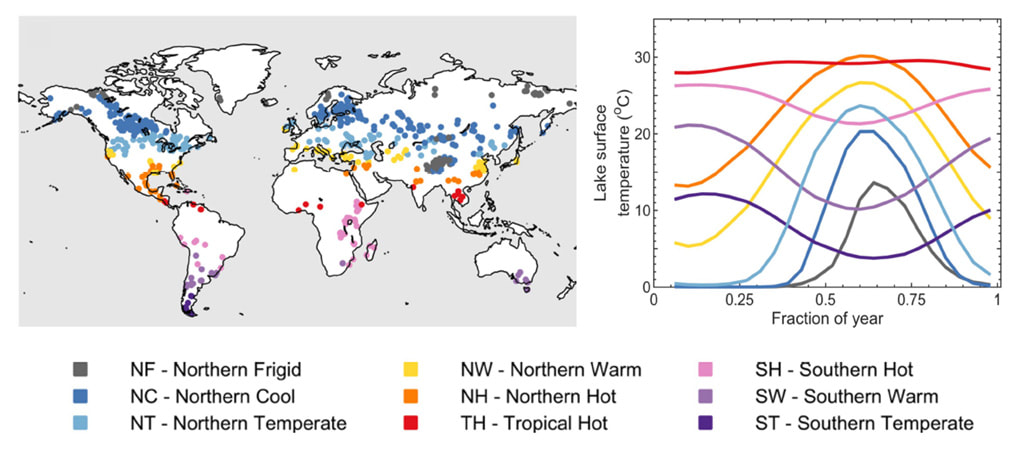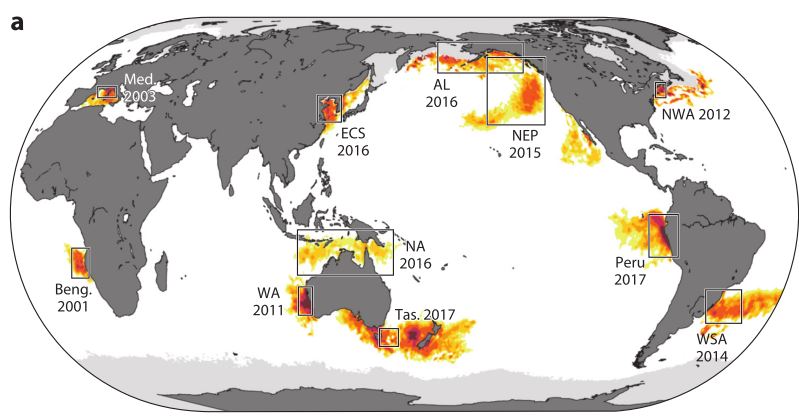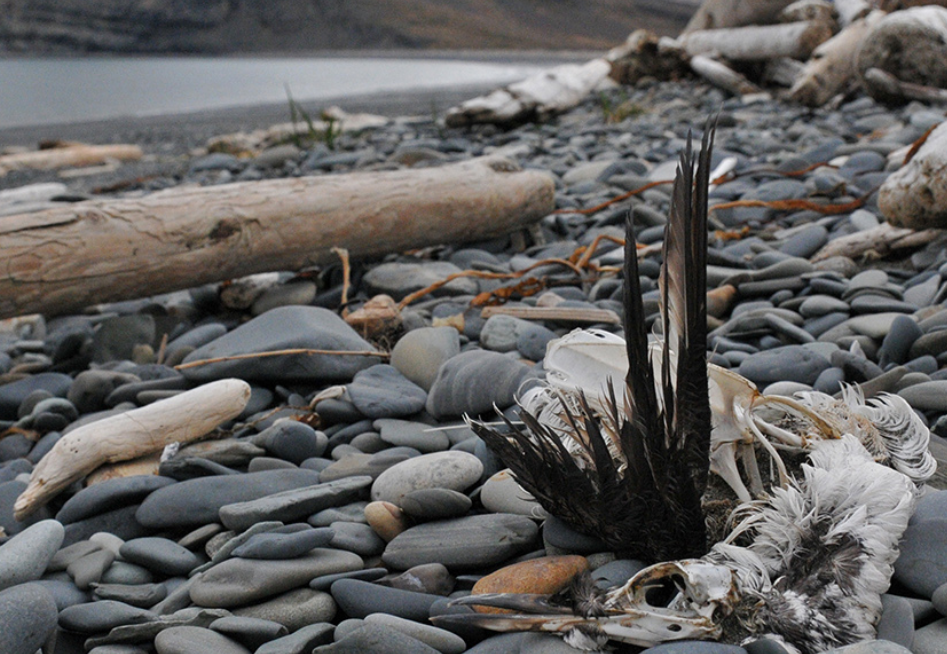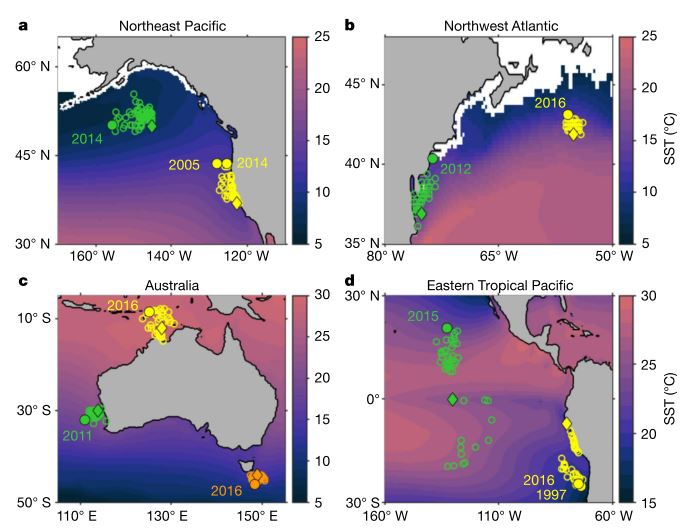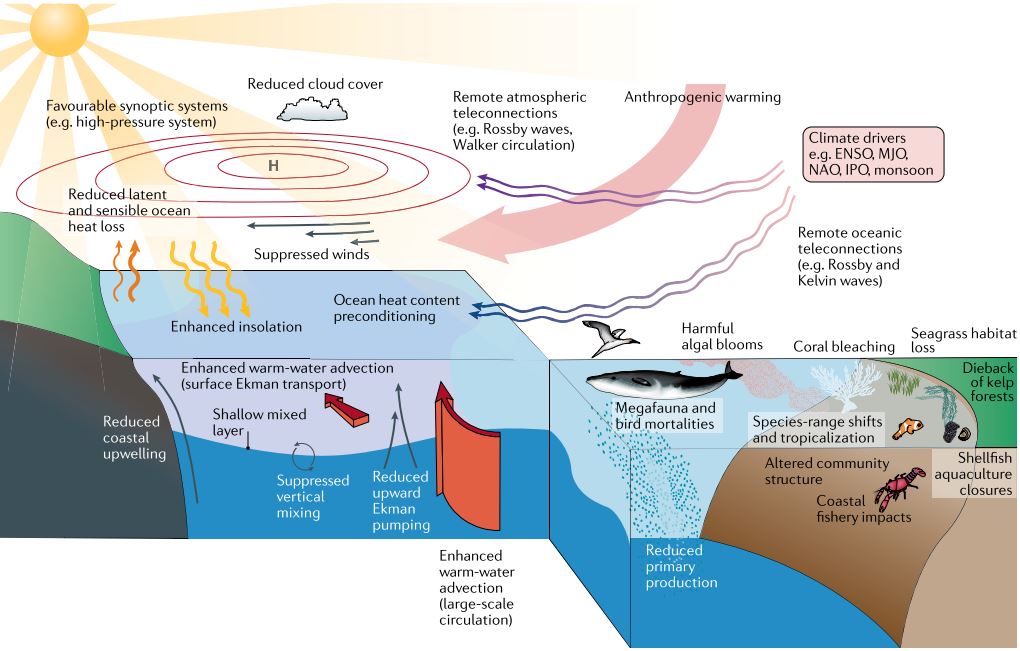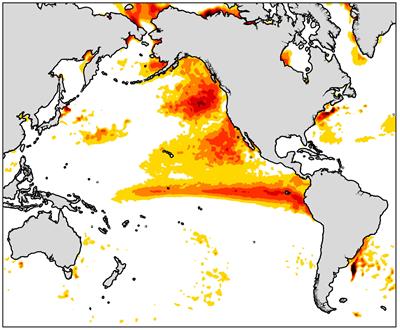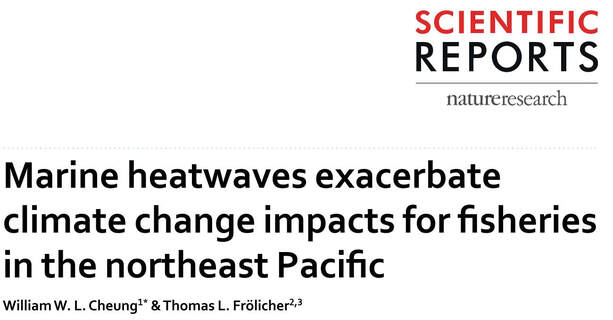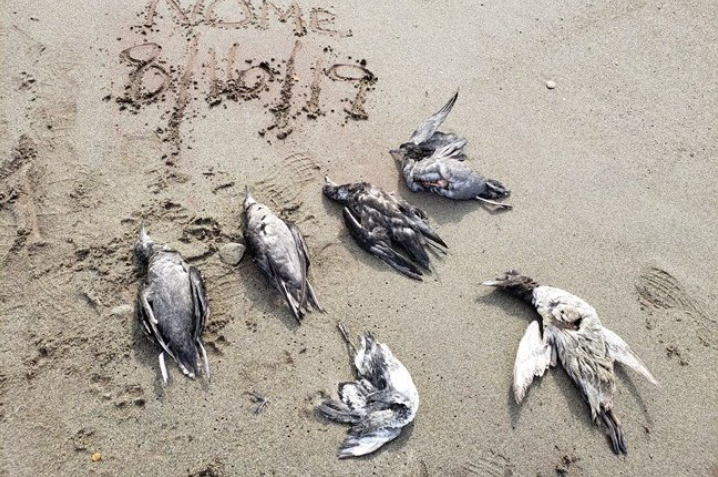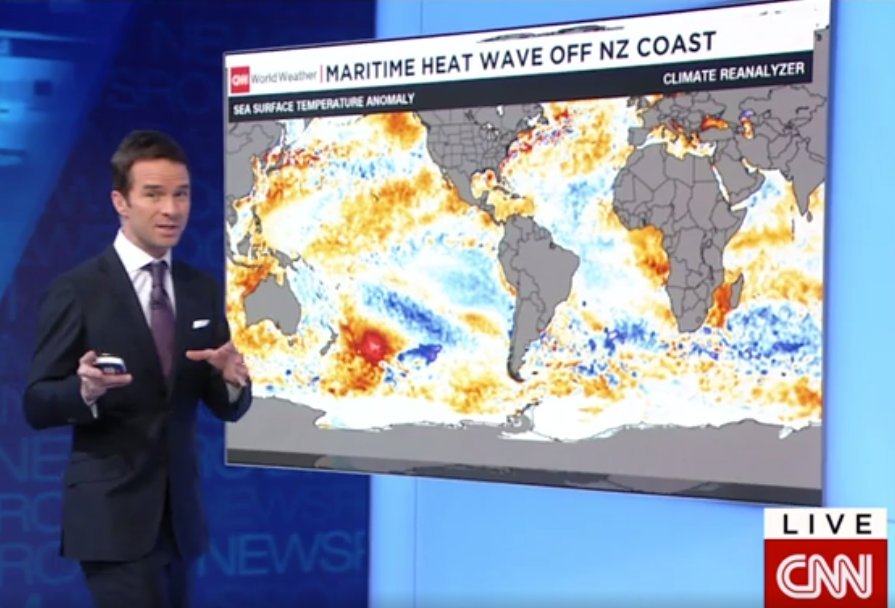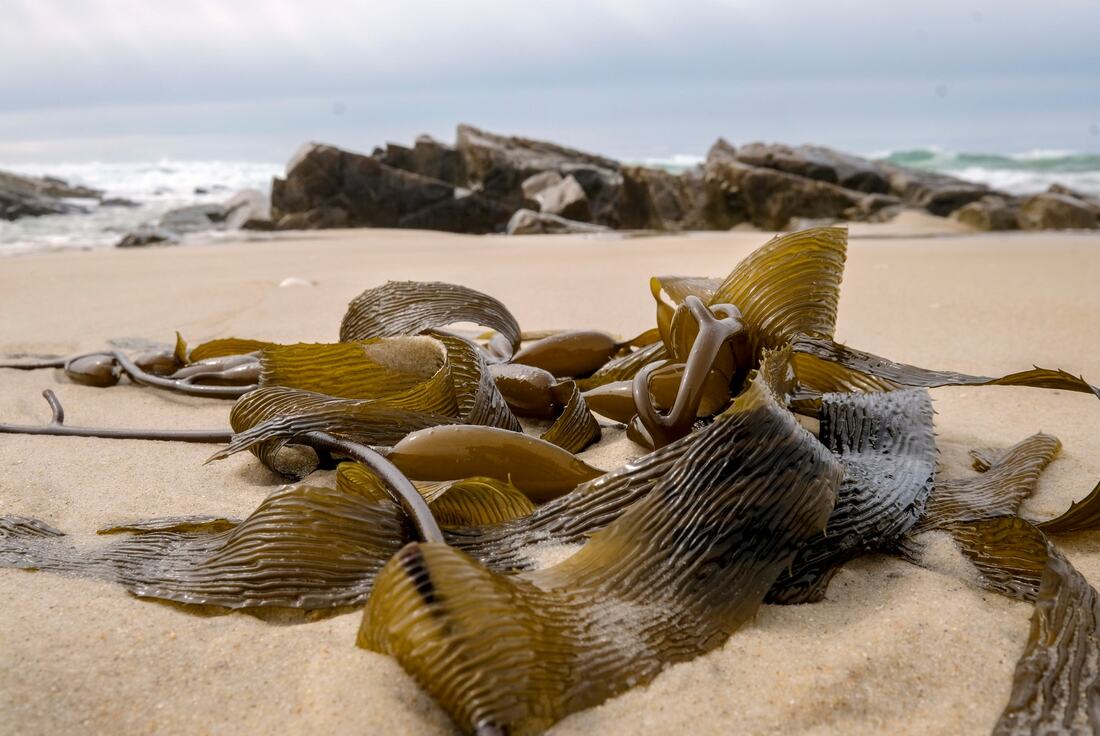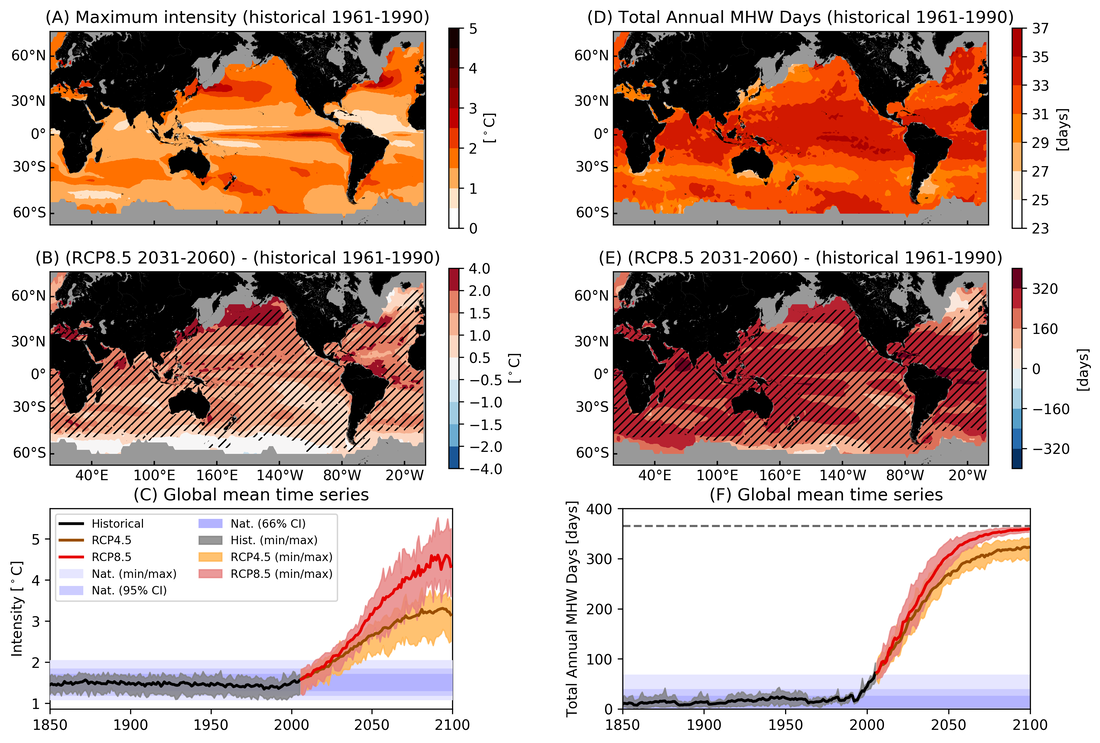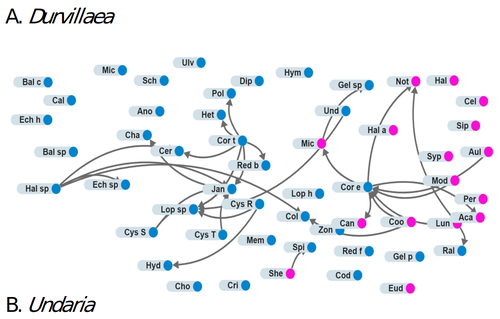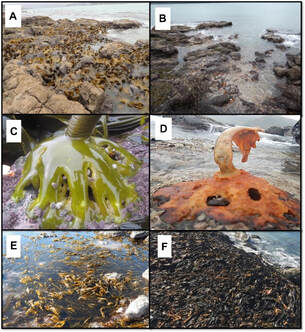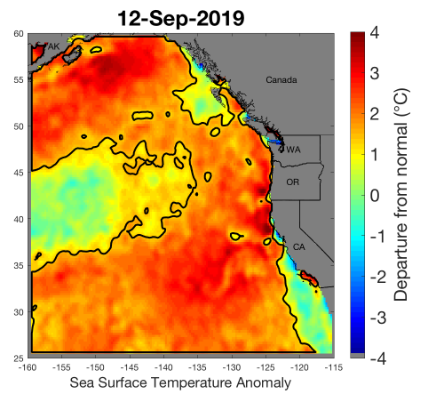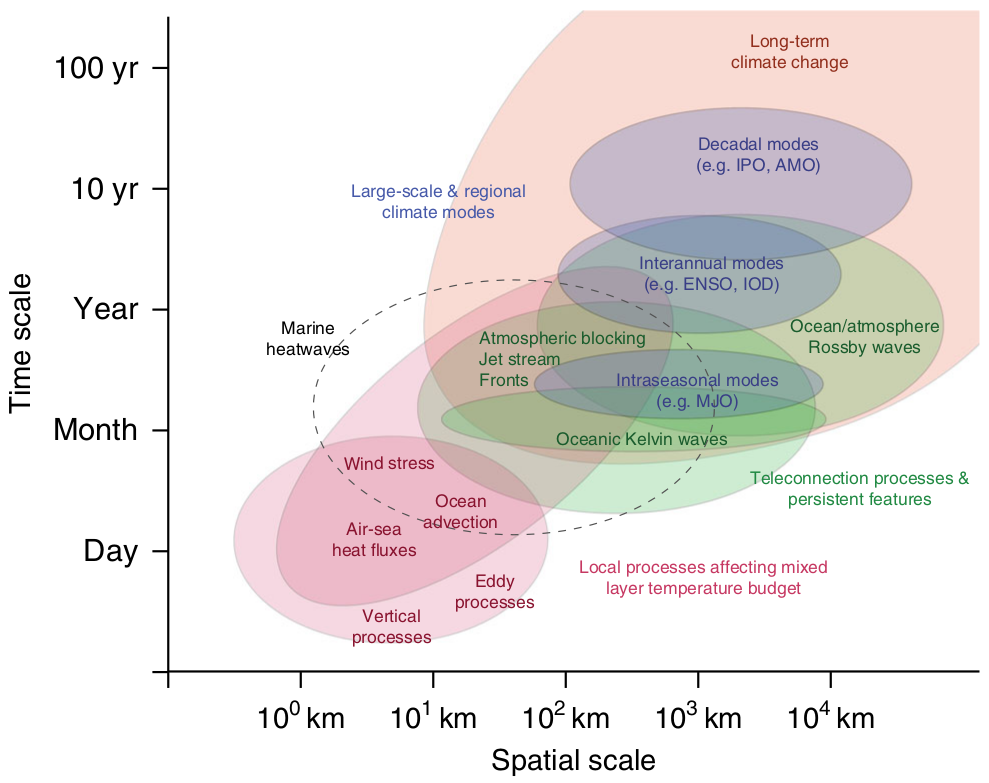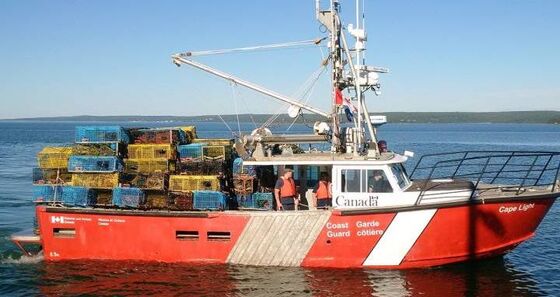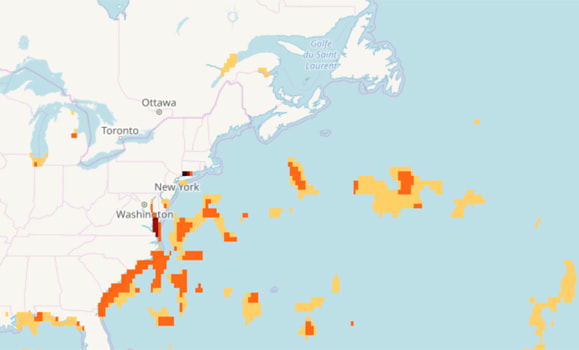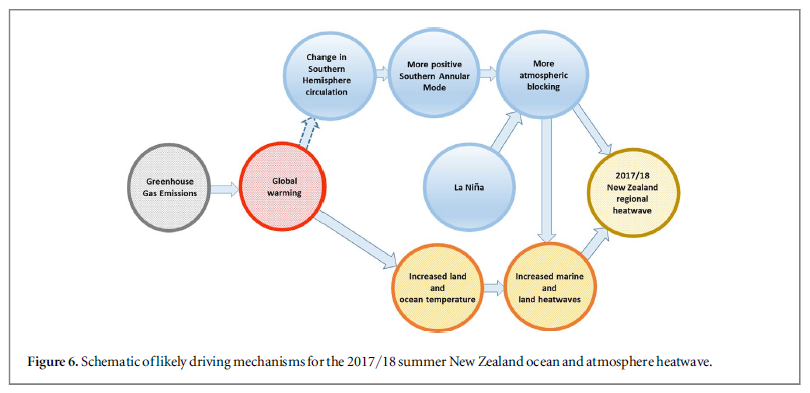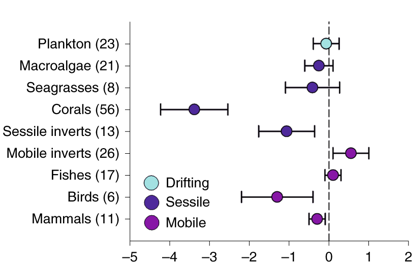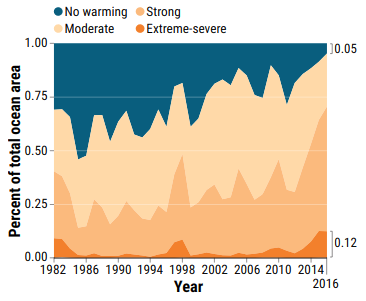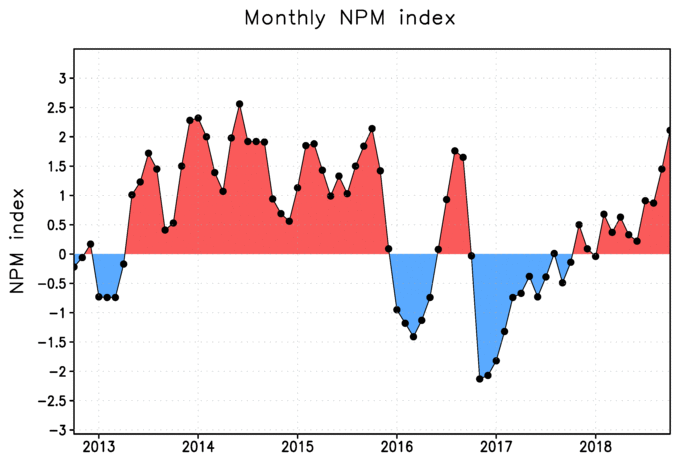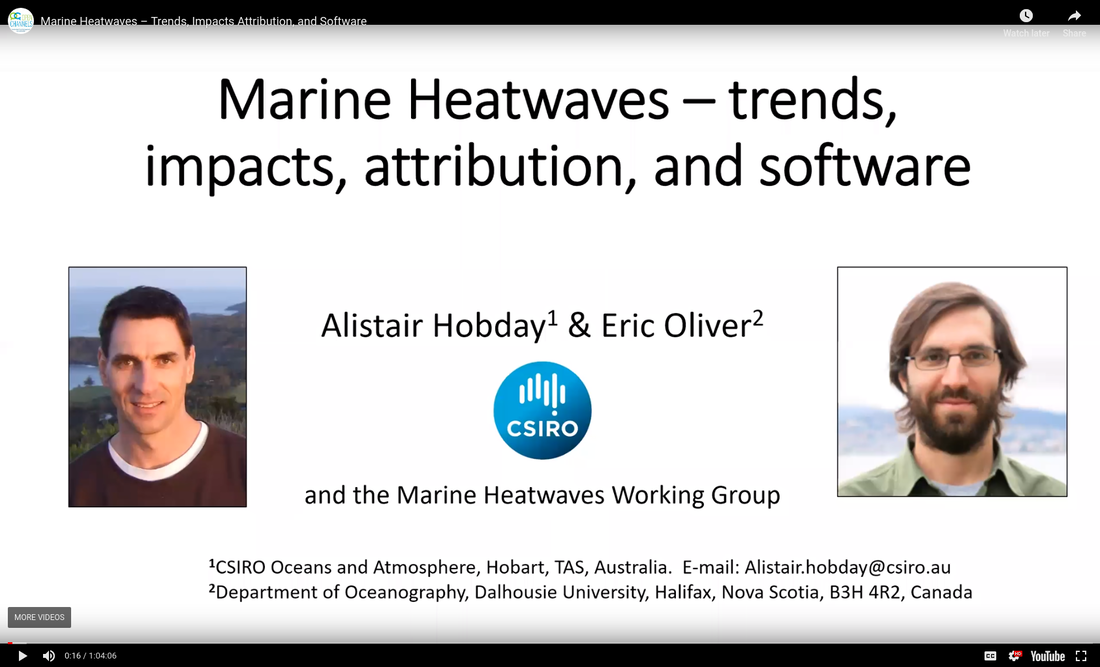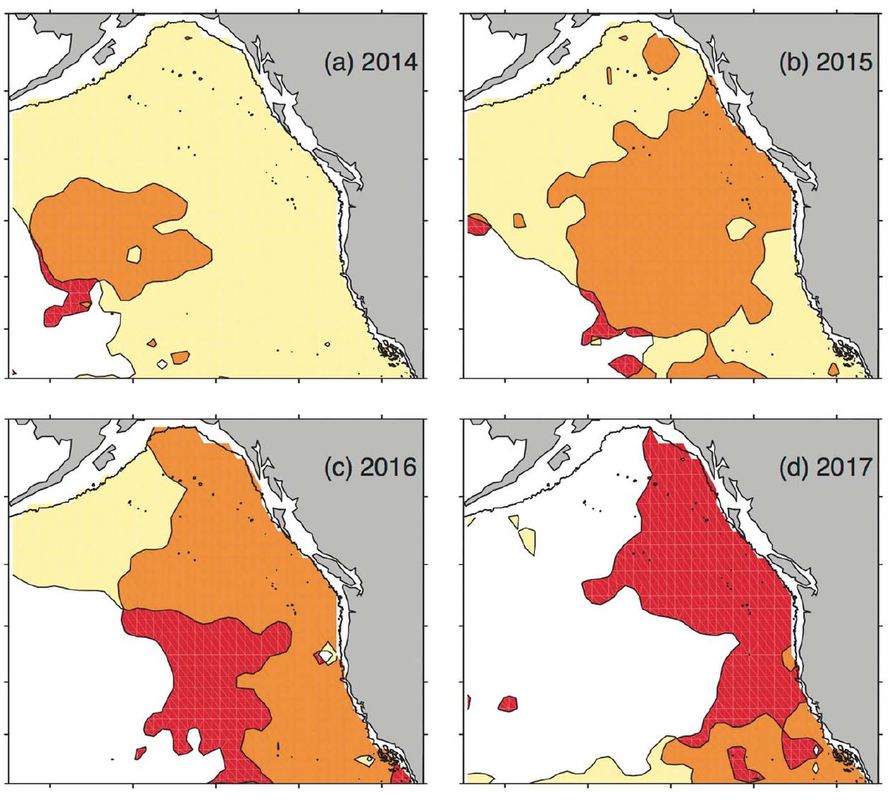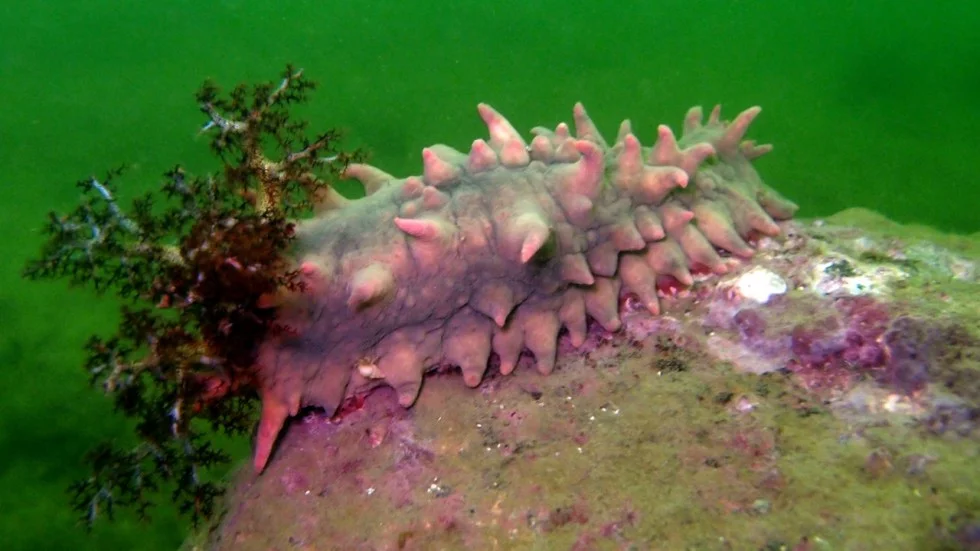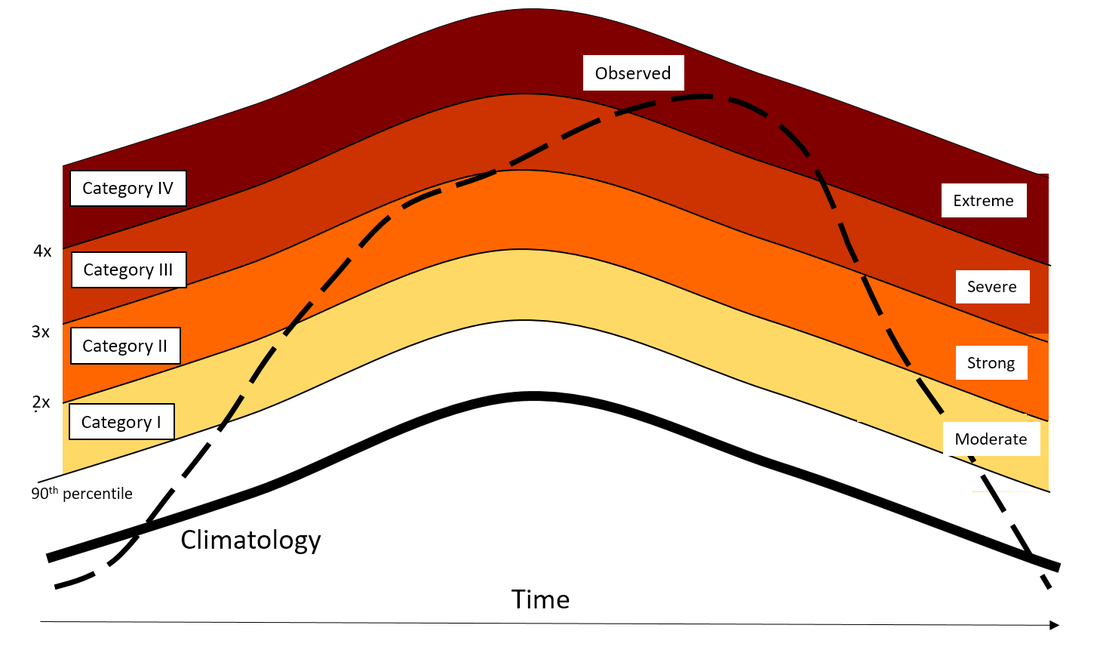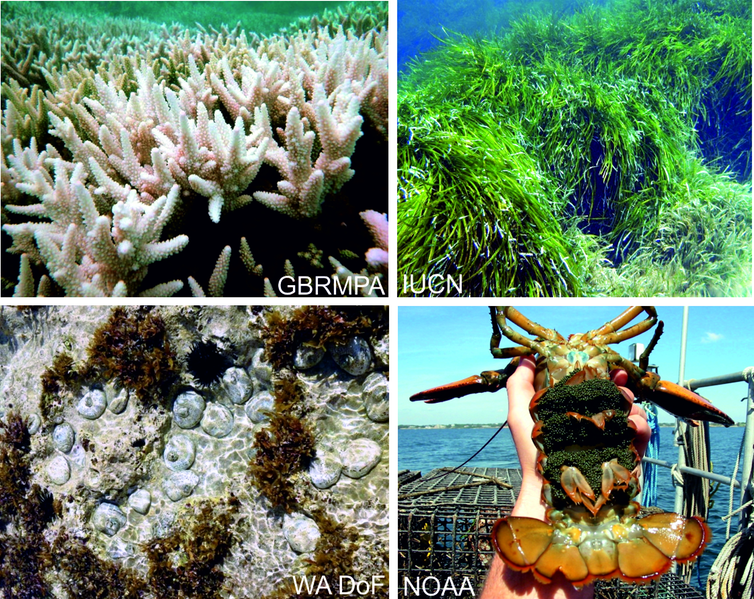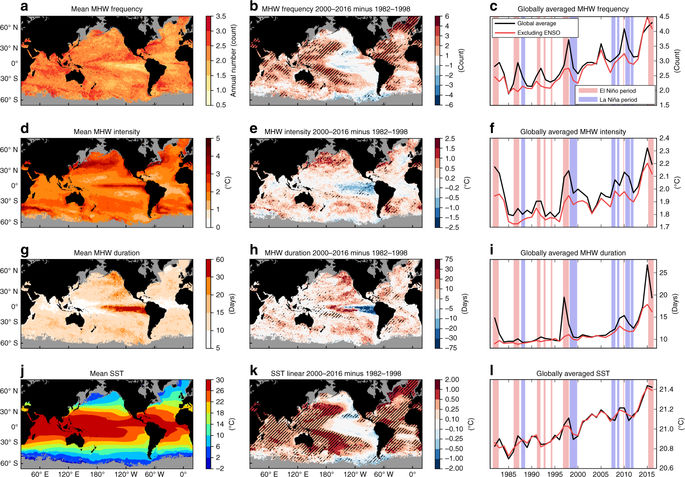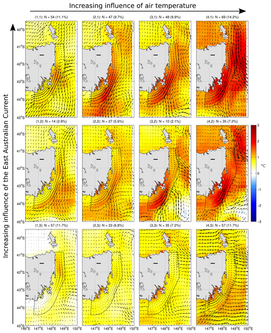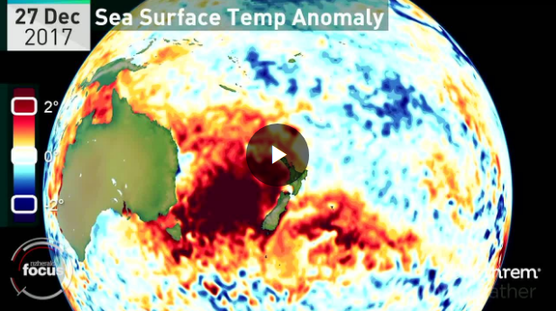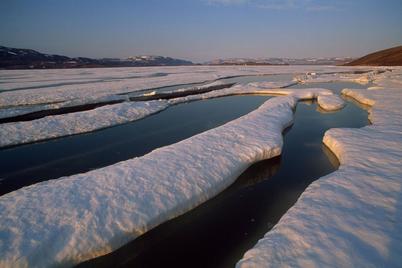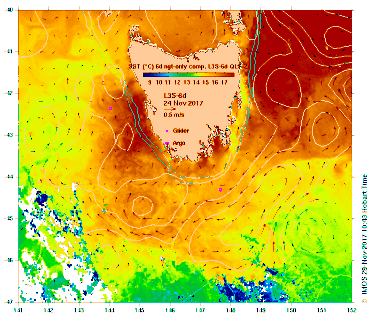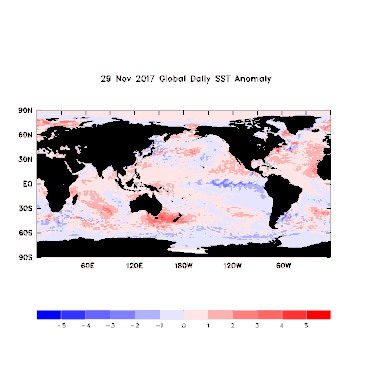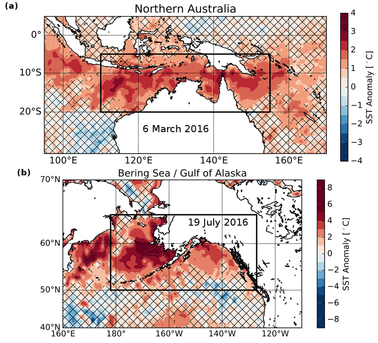We are an international group of scientists dedicated to understanding marine heatwaves on regional to global scales: their physical drivers, properties, predictability and socio-ecological impacts. We take a multi-disciplinary approach to inform management and conservation.
This page summarises new research from our group and others. Follow us on Twitter (X) @marineheatwaves
To access the Tracker - click here
Marine heatwave news
MHW covered the global ocean in 2023
March 2024
World Meteorological Organization (WMO) has released the 2023 summary of the state of the climate indicators with sections on key climate indicators, extreme events and impacts. The global ocean experienced an average daily MHW coverage of 32%, well above the previous record of 23% in 2016. In contrast, the average daily coverage of Marine Cold Spells was only 4%, far below 2022 (7%) |
DRivers of Marine heatwaves in the arcticFebruary 2024
A new study examines the complex links between sea ice, the atmosphere and the ocean that could amplify or hinder marin heatwaves in the Arctic. This study calculates the sources and sinks of heat in a numerical model simulating the ocean and sea ice. Most marine heatwaves in the Arctic are generated by taking atmospheric heat up and disappear when this heat is transferred to the deeper ocean. In doing so, marine heatwaves provide a pathway for heat from the atmosphere to the subsurface ocean. Oceanic circulation can also propagate marine heatwaves along the continental shelf and toward the marginal ice zone. When ice melts, it shoals the upper layer of the ocean, concentrating the atmospheric heat and lengthening and intensifying marine heatwaves. The excess heat stored in the subsurface can be expected to resurface later in the season and will then delay the freezing of new sea ice. |
|
|
Australia's national MHW BRIEFINGS AID PREPARATIONFebruary 2024
Forecasts of a El Niño in 2023/24 raised concern amongst Australian marine stakeholders regarding the potential impacts on marine industries and systems. New forecasting capability for marine heatwaves coincided with this increased level of concern, and briefings were requested by the fisheries sector. The National Briefings showcased new prototype marine heatwave forecasts, indicating where there was a high likelihood of marine heatwaves occurring in the upcoming season, together with likely event severity. Recordings of the briefings are available here:
|
MICROBIAL COMMUNITY CHANGES WITH mHW
February 2024
A new study led by Australia’s national science agency, CSIRO, shows that marine heatwaves (MHWs) are altering the microorganism communities that form the base of the marine food chain, disrupting coastal ecosystems. The researchers analysed a MHW off Tasmania in 2015/16, an extreme warming event, finding it had significant impacts on microorganisms. “The marine heatwave transformed the microbial community in the water column to resemble those found more than 1000 km north, and supported the presence of many organisms that are uncommon at this latitude,” Dr Mark Brown said. |
Early warning helps preparation
August 2023
Likely emergence of El Nino conditions in late 2023 will increase the likelihood of MHWs in some regions of the world. Given this early warning, there is an opportunity to prepare industries that suffer from MHWs. See the paper in Nature. Please check out the Table in the supp materials - lots of ideas about what do before, during and after a marine heatwave. A blog post also summarizes the points made in the paper. |
MARINE HEATWAVES EXPLAINED
June 2023
Project Tuna has put together this engaging short video on the description and impacts of marine heatwaves. See the 7 minute animated video here! |
BIOLOGICAL IMPACTS OF MARINE HEATWAVES
August 2022
In this Annual Review of Marine Science paper, the International MHW team synthesize current understanding of MHW impacts at the individual, population, and community levels. We explore current and emergent approaches to predicting the occurrence and impacts of future events, along with adaptation and management approaches. With further increases in intensity and frequency projected for coming decades, MHWs are emerging as pervasive stressors to marine ecosystems globally. A deeper mechanistic understanding of their biological impacts is needed to better predict and adapt to increased MHW activity in the Anthropocene. |
Rates of onset and decline
January 2022
This publication focuses on rates of MHW onset and decline which describe how quickly a MHW will emerge or disappear from a location. These rates determine the reaction window—the start of a MHW event to peak MHW temperatures—and the coping window—time from peak temperatures to the end of an event—two important time periods relevant to a marine decision-maker. Onset and decline rates are fastest in dynamic ocean regions and overall, the global trend in onset rate is greater than the global trend in decline rate. We mapped ocean regions where these rates are changing together with forecast skill from a seasonal dynamical model (ACCESS-S). This analysis highlights areas where the length of the preparation window for impending MHWs is increased by using forecasts, and areas where marine decision-makers should be prepared for rapid responses based on realtime observations as MHWs evolve. |
|
SCIENCE BRIEF FOR COP26
November 2021
A summary brief examines the links between climate change and marine heatwaves. It synthesises findings from more than 110 peer-reviewed scientific articles. This ScienceBrief Review is part of a collection on Critical Issues in Climate Change Science, relevant to inform the COP26 climate conference to be held in Glasgow (2021). |
SOCIO-ECONOMIC IMPACTS OF MHW
October 2021
Globally 8 of the 10 most extreme marine heatwaves (MHW) ever have occurred since 2010. Our new study, published in Science, demonstrates that the devastating ecological impacts of MHW events extend to socio-economic implications. Socio-economic impacts of MHW events are demonstrated to include impacts on provisioning services relating to fisheries and habitat services relating to loss of foundation species (e.g. corals, kelps, and seagrasses), on cultural services relating to mass mortality of charismatic (e.g. sea lions, sea birds, and corals) and spiritual (e.g. certain kelp) species, and on regulating services relating to carbon sequestration and altered nutrient cycling. A overview popular article was published by The Conversation. |
What about cold events?September 2021
Thanks to the efforts of researchers associated with the Marine Heatwaves International Working Group, and many others around the world, the body of knowledge on extreme ocean temperature events has expanded rapidly. We now know much more about these events than we did just a few years ago. But what about cold events? It is also documented in the literature that extreme cold can also be lethal to species and have had widespread ecological and economic impacts throughout the global ocean. A recent paper about these events, referred to as 'Marine Cold-Spells' , has just been published. This paper provides a literature review of MCSs as well as a global analysis of these events over the satellite record (1982-2020). MCS duration and intensity are both generally in decline throughout the global ocean, with the exception of the Southern Ocean, where seasonal ice break-up appears to be happening later into the year. These global MCS results are now available in near-real-time on the Tracker. To find them first click on the 'Map layer' button, then click on 'MCS Category'. There are also historic MCS records back to 1982-01-01. |
forecasting marine heatwaves via machine learning
January 2021
Australian team makes world-first marine heatwave predictions (see here), with lead time of five months. The forecast was based on data to November 2020, and predicted a marine heatwave off the Western Australian coast beginning in January. The image on the left, from the MarineHeatwaveTracker, shows that a marine heatwave was present in early January. Forecasts were based on a machine learning approach, and included observations on SST and ocean heat content. |
Lakes have heatwaves too - LHWs
January 2021.
Study by Woolway et al in Nature found that LHW's could become between three and 12 times longer by the end of this century – and between 0.3C and 1.7C hotter. A “lake heatwave” is defined consistent with the working group definition of marine heatwaves – a period of at least five days with “extreme warm” surface water temperatures. Easy-to-read commentary by Ayesha Tandon, CarbonBrief |
A primer for Marine heatwaves
January 2021 "Marine Heatwaves" a review paper by Eric Oliver and colleagues from the International MHW working group, published in Annual Reviews in Marine Science. This paper provides a description for calculating heat budgets, contrasts the fixed or moving baseline issue, and has some schematics that we hope will be useful for presentations and classes. |
How marine heatwaves are changing ocean ecosystemsWonderful story map on what was learned from a massive seabird die-off in the North Pacific. This is related to the major 2014-2016 marine heatwave that occurred there. Story map can be found here.
|
Marine heatwaves: their devastating impact on wildlifeSeptember 2020
In Europe, August was warmer than average, with temperatures 1.1 ºC above the 1981-2010 reference period. This led to a number of marine heatwaves across the Mediterranean and associated impacts on marine ecosystems. News story here. |
mhw THERMAL DISPLACEMENT metric
August 2020
Michael Jacox and his team have expanded the metric toolkit to define and understand marine heatwaves in this Nature paper. Thermal displacement characterizes MHWs by the spatial shifts of surface temperature contours, instead of by local temperature anomalies. They show that thermal displacements during MHWs vary from tens to thousands of kilometres. This metric will advance understanding of MHW-driven spatial shifts, which are of comparable scale to those associated with long-term climate change. According to the associated Nature commentary by Mark Payne, this will improve the approach to exploring biological impacts, using conventional metrics when thermal tolerance at a location is the main concern, and thermal displacement when species-distribution shifts are a focus. |
FUTURE DIRECTIONS FOR MARINE HEATWAVE RESEARCHJuly 2020
This perspective published in Nature Reviews Earth & Environment, covers the physical basis for marine heatwaves, including atmospheric and oceanic drivers, and approaches to monitoring events. The potential for predictability is explored, with a proposed model based on atmospheric and oceanic contributions. Plenty of good stuff, and figures that we hope will be useful for lecturing and presentations. |
Special issue on MHWs completed
May 2020
A total of 23 papers have now been published in a special issue of Frontiers in Marine Science. Research Topic: Advances in Understanding Marine Heatwaves and Their Impacts. An introduction to the special issue provides a great overview. Access all open access papers here |
Projections show MHW IMPACTS ON FISH STOCKS ALONG WEST COAST OF usa
April 2020
Cheung & Frolicher combine outputs from a large ensemble simulation of an Earth system model with a fish impact model to simulate responses of major northeast Pacific fish stocks to MHWs. They found that MHWs cause biomass decrease and shifts in biogeography of fish stocks that are at least four times faster and bigger in magnitude than the effects of decadal-scale mean changes throughout the 21st century. MHWs amplify climate change impacts for fisheries and their management. Paper is free to download here. |
Marine heatwave caused
|
There's a Texas-size area of hot sea water off the coast of New Zealand28 December 2019
'In the South Pacific Ocean east of New Zealand, satellite imagery shows a massive area of ocean water at well-above-average temperatures. The water in the area is about 5 degrees Celsius "warmer than average," said James Renwick, a professor and head of the School of Geography, Environment and Earth Sciences at Victoria University in Wellington, NZ. The patch of sea is about a million square kilometers (400,000 square miles), covering an area of ocean larger than the size of Texas. It's especially rare to see over such a large area, but scientists say global climate change is making these phenomena more common.' |
2°C: BEYOND THE LIMIT27 December 2019
On land, Australia’s rising heat is ‘apocalyptic.’ In the ocean, it’s worse. "Rodney Dillon noticed the day he squeezed into a wet suit several years ago and dove into Trumpeter Bay to catch his favorite food, a big sea snail called abalone. As he swam amid the towering kelp forest, he saw that "it had gone slimy." He scrambled out of the water and called a scientist at the University of Tasmania in nearby Hobart. "I said, 'Mate, all our kelp's dying, and you need to come down here and have a look.'" |
Projected FUTURE Marine Heatwaves and Potential Ecological ImpactS4 December 2019
Future changes in MHWs to the end of the 21st century are estimated in this recent paper. Significant increases in MHW intensity and count of annual MHW days are projected to accelerate, with many parts of the ocean reaching a near-permanent MHW state by the late 21st century. Comparison with simulations of a natural world, without anthropogenic forcing, indicate that these trends have emerged from the expected range of natural variability within the first half of the 21st century. This discrepancy implies a degree of “anthropogenic emergence,” with a departure from the natural MHW conditions that have previously shaped marine ecosystems for centuries or even millennia. Based on these projections we expect impacts on marine ecosystems to be widespread, significant and persistent through the 21st century. |
marine heatwave altered species-interaction and community in NZ10 April 2019
This paper showed that community structures and interaction networks changed dramatically following an unusually strong marine heatwave on the south island of New Zealand in 2017/18. The typical community, associated with southern bull kelp (Durvillaea spp.), that normally are dominated by encrusting alga and grazing molluscs, was replaced by a new community dominated by the invasive kelp Undaria and turf-forming alga. |
A marine heatwave caused regional extinction of southern bull kelp in NZ6 March 2019
This paper documented that the 2017/18 marine heatwave on the south island of New Zealand caused localized extinction of bull kelp (Durvillaea spp.). The space previously occupied by bull kelp forests was rapidly colonized by the invasive kelp Undaria pinnatifida and weedy seaweed like Ulva. Media here. |
The California Current
|
Marine heatwaves study in Top 5023 July
A study on long-term trends in marine heatwaves is the 3rd-most read Nature Communications article in the area of Earth & Planetary Sciences. |
Global assessment of marineheatwaves and their drivers14 June
A paper published today in Nature Communications by an international team has presented the first global assessment of the major drivers of marine heatwaves. The assessment considered marine heatwaves and their drivers in 22 regions across four ocean and climate zones, based on published papers since 1950. They found that known climate phenomena, like the El Niño – Southern Oscillation or the North Atlantic Oscillation, with their centre-of-action in one ocean basin can increase the odds of marine heatwaves in other regions thousands of kilometres away. The baseline knowledge from this study regarding the important drivers of marine heatwaves across the globe will be invaluable to researchers. |
The Lobster trap13 June 2019
An article in the Toronto Star on the northwest Atlantic lobster fishery, and in part how it is sensitive to marine heatwaves |
WEBINAR on mARINE HEATWAVES7 June 2019
A recent webinar on 'What causes marine heatwaves and how are they changing' was given by Professor Neil Holbrook from the University of Tasmania. A recording of the webinar is available online. |
New Website for tracking
|
DRIVERS, MECHANISMS AND IMPACTS OF THE 2017/18 NEW ZEALAND heatwave9 May 2019
A recent paper examines the summer 2017/18 ocean and atmospheric heatwave that occurred in the New Zealand region, and documents its drivers, mechanisms and diverse impacts. |
Marine Heatwaves threaten biodiversity and the provision of ecosystem services5 march 2019
A paper published this week from our research team demonstrates the global impact of marine heatwaves on ecosystems, including biodiversity and the provision of ecosystem services. Media coverage includes The Guardian, The New York Times and National Geographic. |
Ocean heat waves like the Pacific’s deadly ‘Blob’ could become the new normal6 Feb 2019
A good review of 'the Blob', it's impacts, and the history and current state of marine heatwave research. You can read it on sciencemag.org here. |
RETURN OF THE BLOB?11 November 2018
Record warming has returned to the North Pacific recently. This time there is similarity but also difference past events there, including some interesting subsurface signals. Is this the "Return of the Blob", or something else? A news story with details available here. |
Marine Heatwaves webinar24 October 2018
A recent webinar on 'Marine Heatwaves - trends, impacts attribution, and software' was delivered by Alistair Hobday and Eric Oliver. The webinar was virtually well-attended, with nearly 100 listeners logging in from around the world. A video of the webinar is available online. |
Lingering effects of the NE pacific BLOB in coastal waters
26 September 2018
Recent publication by Jen Jackson et al in GRL reports that warm waters have persisted in coastal waters after the 2013- 2015 marine heatwave, nicknamed The Blob, and the 2015-2016 El Niño. Surface satellite data have shown that the warm water was gone by 2016. Using temperature data collected by ship and ARGO floats, they showed that abnormally warm water continues to exist in the open ocean below the surface, at about 140‐m depth. In the coastal ocean,deep waters in Rivers Inlet are still 0.3° to 0.6 °C warmer than normal, at least 4 years after The Blob was first observed. This warm water could have a big impact on the Rivers Inlet ecosystem. See the article. Heatwave changes fish community and hence coral recovery
14 August 2018
New study published in the journal Nature reports on an extensive survey of the Great Barrier Reef before and after a marine heatwave in 2016. The rise in ocean temperatures in 2016 led to a fall in populations of parrotfish, which keep corals healthy and help them recover from bleaching events by eating harmful algae. Popular article in the OceanDeeply |
HEATWAVE TAKES TOLL ON
|
New Record Water Temperature2 August 2018
Highest-Ever Seawater Temperature Recorded at Scripps Pier Sea-surface reading of 25.9℃ (78.6 ℉) highest in 102 years of measurements. See full article here. |
A categorisation system
|
Marine heatwaves are getting hotter, lasting longer and doing more damage31 May 2018
A recent article in The Conversation discusses marine heatwaves and global changes and impacts. On land, heatwaves can be deadly for humans and wildlife and can devastate crops and forests. Unusually warm periods can also occur in the ocean. These can last for weeks or months, killing off kelp forests and corals, and producing other significant impacts on marine ecosystems, fishing and aquaculture industries. Yet until recently, the formation, distribution and frequency of marine heatwaves had received little research attention. |
GLOBAL MHW TRENDS11 April 2018
Global increase in the frequency and duration of MHWs. Our latest study showed that from 1925 to 2016, global average marine heatwave frequency and duration increased by 34% and 17%, respectively, resulting in a 54% increase in annual marine heatwave days globally. https://www.carbonbrief.org/marine-heatwaves-have-become-34-more-likely-over-past-century http://www.cbc.ca/news/canada/nova-scotia/marine-heat-wave-ocean-hot-spot-study-1.4611794 MASS SEABIRD MORTALITY IN mhwSMarch 2018
The Pacific Blob of 2015/16 resulted in very high mortality of Cassins auklet. This study combined multi-trophic level information to attribute causes of mortality across a coastal gradient. Jones, T., J. K. Parrish, W. T. Peterson, E. P. Bjorkstedt, N. A. Bond and L. T. Ballance (2018). Massive mortality of a planktivorous seabird in response to a marine heatwave. Geophysical Research Letters 45: https://doi.org/10.1002/2017GL076164. Eastern Tasmania MHWs20 Feb 2018 Marine heatwaves off eastern Tasmania increasing in frequency and penetration depth since 1993. The East Australian Current is the dominant driver of marine heatwave variability. A recent study published in Progress in Oceanography. |
HOTTEST JANUARY in NZ27 March 2018 An update on the Tasman Sea heatwave that affected New Zealand. A joint special report issued by the BOM (Australia) and NIWA (NZ) describes the marine and atmospheric elements. 1 Feb 2018 New Zealand recorded it's hottest January on record in 2018, and a Tasman Sea marine heatwave had a large part to play. |
Human Emissions Made Ocean HeatWave 53 Times More Likely
16 Jan 2018 Three 2016 marine heat waves that killed whales, birds, corals, and shellfish from Australia to Alaska were many times more likely thanks to climate change. A story on our work, by National Geographic. |
Southern tasmania
Nov 2017 A MHW is currently present south of Tasmania. Here is a piece that describes it from satellite and argo observations. |
Northern Australia & Bering Sea / Gulf of AlaskaDec 2017 Two major marine heatwaves of 2016 were many times more likely due to anthropogenic climate change, reported in the Explaining Extremes of 2016 supplement to the Bulletin of the American Meteorological Society. |
